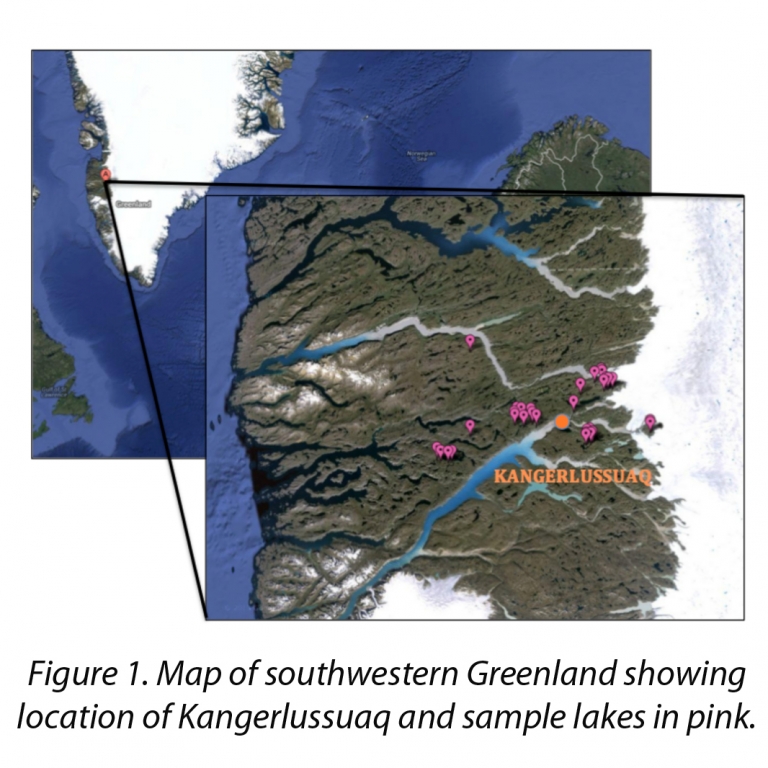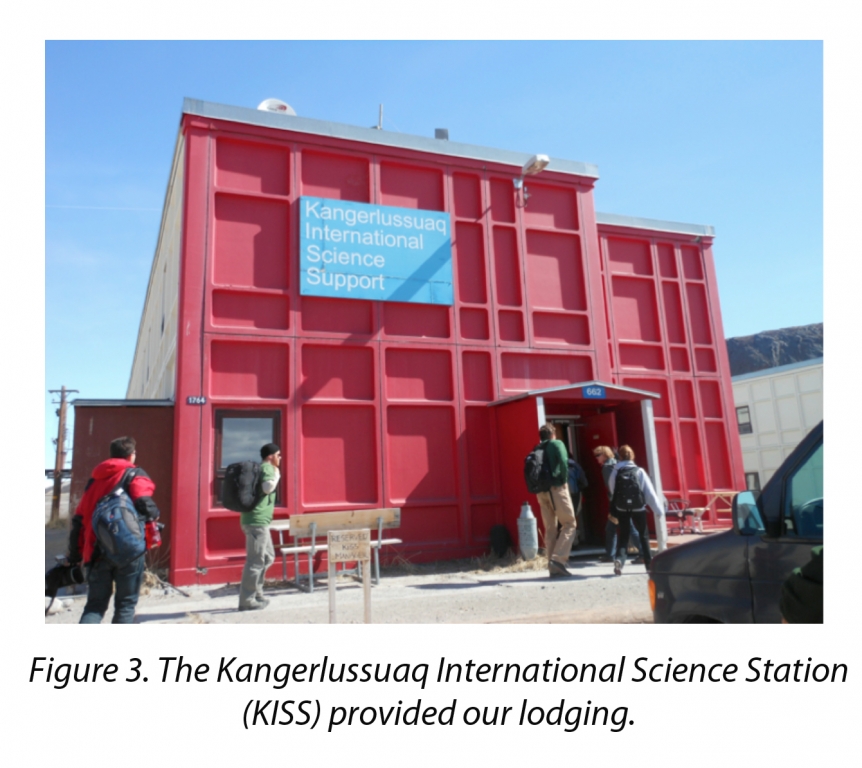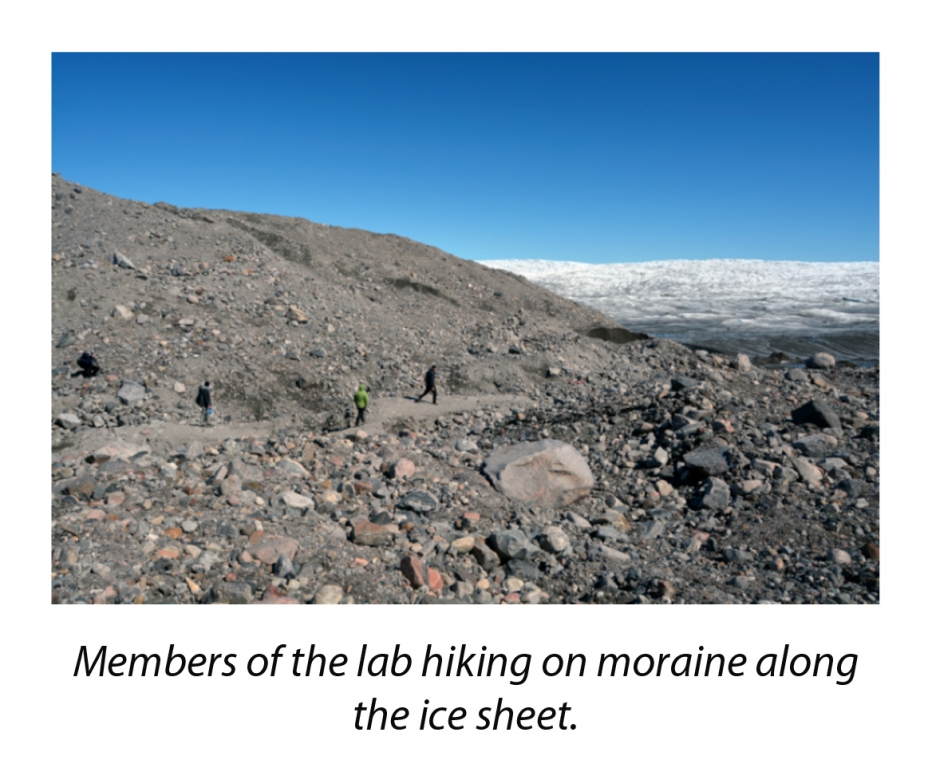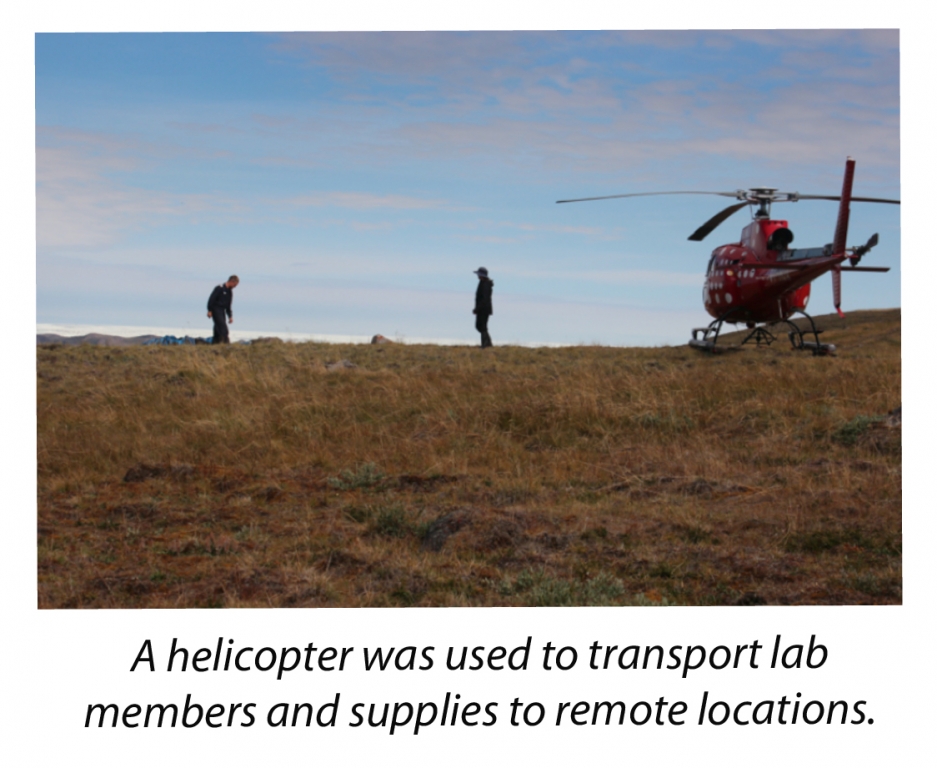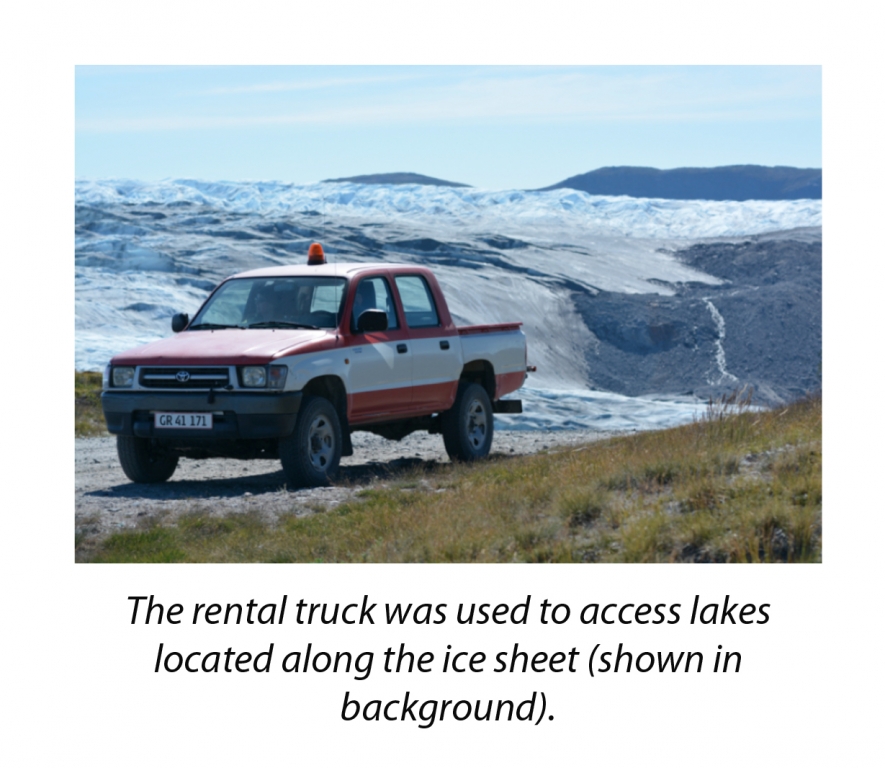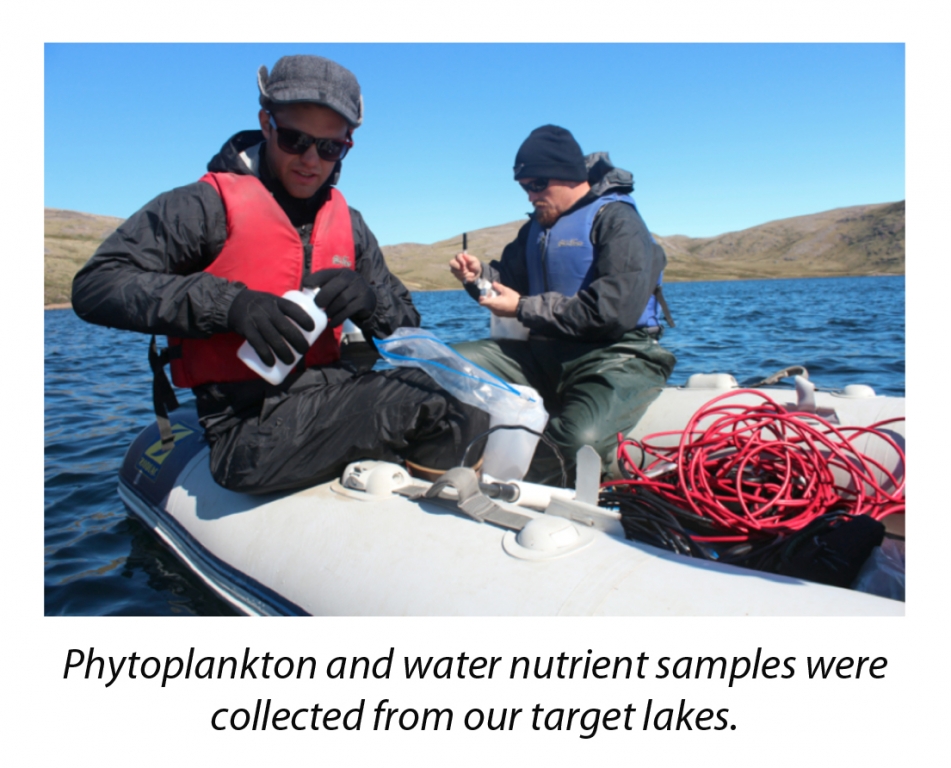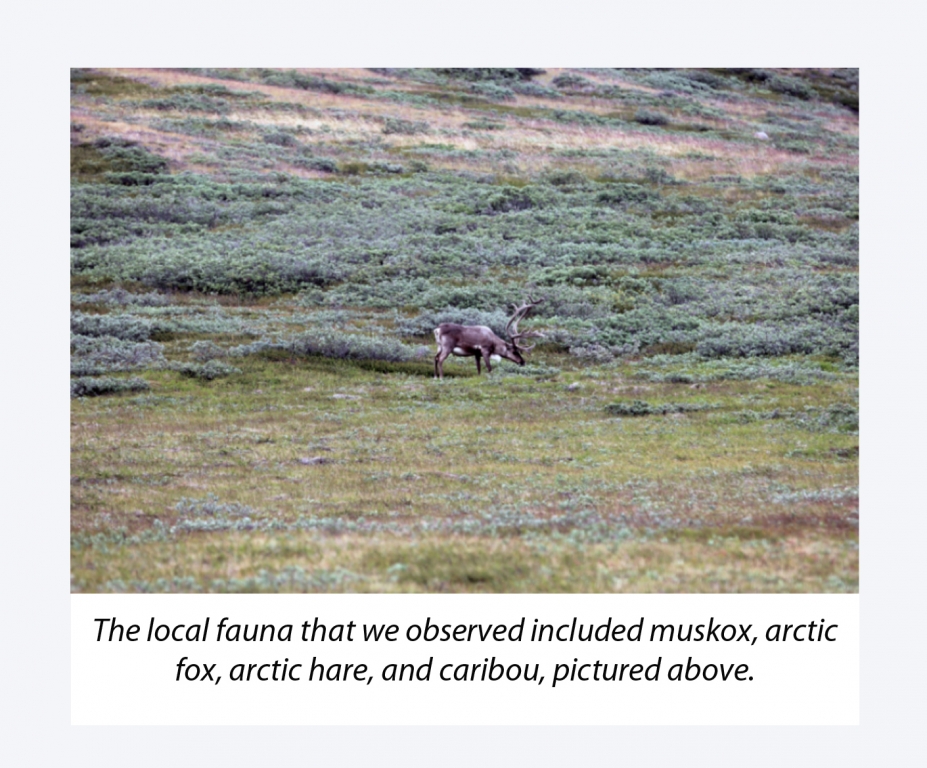Climate-Driven Changes in Nutrients and Water Column Stability in Lakes of Southwestern Greenland
Climate-Driven Changes in Nutrients and Water Column Stability in Lakes of Southwestern Greenland
Field Team Members: Benjamin Burpee, Jasmine Saros, Robert Northington, and Emily Rice
Dates: July 15th – August 2nd 2013
Southwestern Greenland
Kangerlussuaq (67°00′31″ N 50°41′21″ W) is located in southwestern Greenland in the widest margin between the coast and ice sheet at 180 km. This area of Greenland contains over 20,000 lakes, most of which are oligotrophic and dilute (Anderson et al. 2001). These lake ecosystems, like those of many arctic lakes, are closely linked to climate and can serve as sensitive indicators of change (Smol et al. 2005). The purpose of our expedition was to sample a subset of 26 lakes surrounding Kangerlussuaq (Figure 1) to provide us with neo- and paleo-limnological data that might help us understand the relationship between the nutrients, mixing, and ecology of these lakes in relation to climate change.
Diatoms are siliceous algae that are easily fossilized in lake sediments. Based on diatom species present in fossil records, past conditions of lakes, the surrounding environment, and climate can be inferred (e.g., Anderson and Renberg 1992; Fritz et al. 1991; Anderson et al. 1990). Though some studies have observed predictable effects of climate change on diatom community structure across many arctic lakes (Smol et al. 2005), lakes in southwestern Greenland exhibit variable responses. Some studies have attributed this variance to gradients in salinity (Ryves et al. 2002) while others have correlated it to spatial distribution and pH (Perren et al. 2009). Based on work done in alpine lakes correlating nutrient dynamics and seasonal lake mixing to diatom community reorganizations (Saros et al. 2012), our group is in agreement with a recent hypothesis suggesting nutrient limitation patterns among the Greenland lakes are responsible for the inconsistency in community responses to climate change (Reuss et al. 2013). In order to evaluate this prediction we collected phytoplankton and zooplankton samples, sedimentation rate, physical water quality, and bathymetry data, surface sediments and sediment cores (Figure 2), as well as heterotrophic microbial enzyme samples for my own thesis research.
This field expedition would not have been possible without The Churchill Exploration Fund. The funds were used to support my stay at Kangerlussuaq International Science Station (KISS, Figure 3), which was central to our sampling locations and provided access to basic laboratory facilities. We accessed the target lakes by hiking, helicopter, or truck transportation. A portion of the Churchill Exploration Funds was used to pay for some of the truck rental such that all 26 lakes were sampled as planned. In addition to the target lakes, I rented an ATV for two days to access and sample additional, glacially fed lakes along the ice sheet for sediment, biofilm, and water. These samples expanded my data set and will be assayed for microbial digestive enzyme activities and may provide insight to nutrient dynamics within these lakes.
With the data we were able to collect during this trip, we will be able to evaluate the effects of lake nutrients and mixing patterns on diatom community structure (Saros et al. 2012) and heterotrophic microbial activity (Garcia et al. 2013) within southwestern Greenland. Hopefully these contemporary data will lead to a coherent pattern that explains the variability of lake ecosystem responses to climate change within this region. Using diatom fossil records as indicators of historical patterns of lake stratification, we might also be able to better understand how changing climate influences seasonal mixing events.
Literature Cited:
Anderson, N.J., Harriman, R., Ryves, D.B. et al. 2001. Dominant factors controlling variability in the ionic composition of west Greenland lakes. Arct. Antarct. Alp. Res., 33: 418-425.
Anderson, N.J. and Renberg, I. 1992. A palaeolimnological assessment of diatom production responses to lake acidification. Environ. Pollut., 78(1–3): 113-119.
Anderson, N.J., Rippey, B. and Stevenson, A.C. 1990. Change to a diatom assemblage in a eutrophic lake following point source nutrient re-direction: a palaeolimnological approach. Freshw. Biol., 23: 205–217.
Fritz, S.C., Juggins, S., Battarbee, R.W. and Engstrom, D.R. 1991. Reconstruction of past changes in salinity and climate using a diatom-based transfer function. Nature, 352: 706-708.
Garcia, S.L., Salka, I., Grossart, H.P., and Warnecke F. 2013. Depth-discrete profiles of bacterial communities reveal pronounced spatio-temporal dynamics related to lake stratification. Environ. Microbiol. Rep., 5(4): 549-555.
Perren, B.B., Douglas, M.S.V. and Anderson, N.J. 2009. Diatoms reveal complex spatial and temporal patterns of recent limnological change in West Greenland. J. Paleolimnol., 42: 233-247.
Reuss, N.S., Anderson, N.J., Fritz, S.C., and Simpson, G.L. 2013. Responses of microbial phototrophs to late-Holocene environmental forcing of lakes in south-west Greenland. Freshw. Biol., 58: 690-704.
Ryves, D.B., McGowan, S. and Anderson, N.J. 2002. Development and evaluation of a diatom-conductivity model from lakes in West Greenland. Freshw. Biol., 47: 995-1014.
Saros, J.E.; Stone, J.R.; Pederson, G. et al. 2012. Climate-induced changes in lake ecosystem structure inferred from coupled neo- and paleo-ecological approaches. Ecology, 93(10): 2155-2164.
Smol, J.P., Wolfe, A.P., Birks, H.J.B. et al. 2005. Climate-driven regime shifts in the biological communities of arctic lakes. Proc. Natl. Acad. Sci. USA, 102: 4397-4402.


